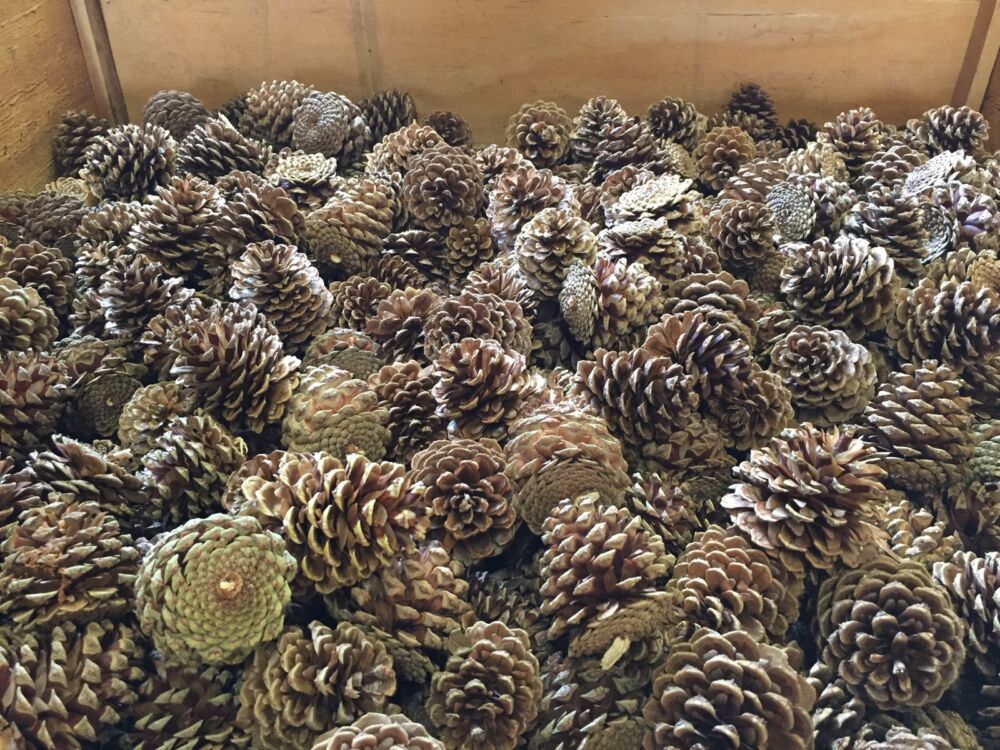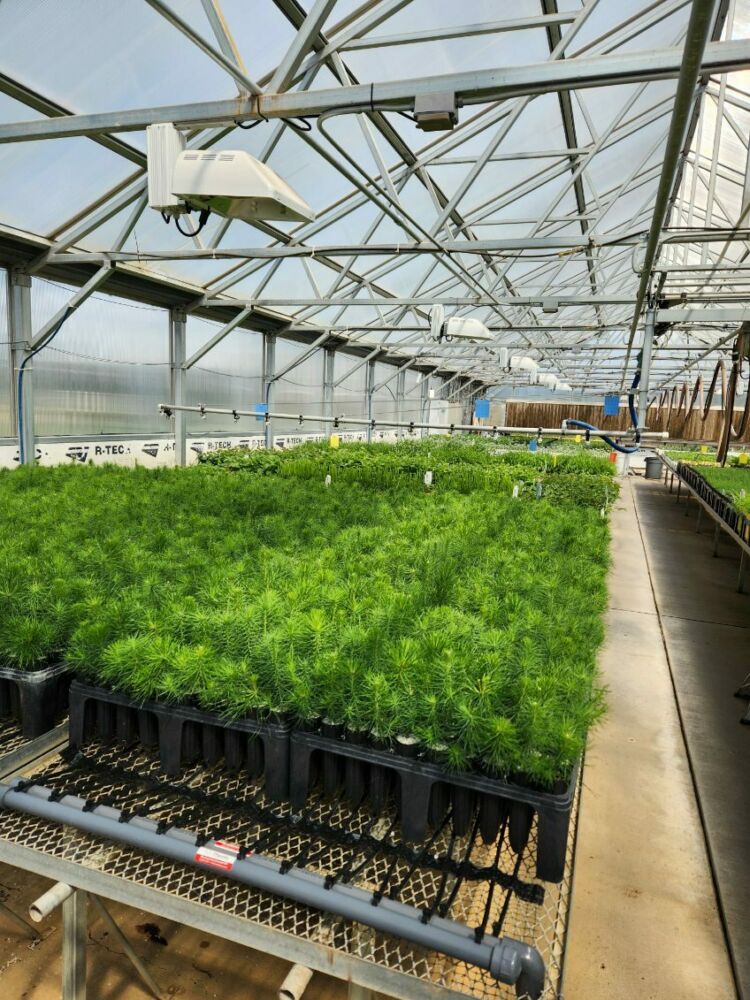All year, we share amazing stories about recreating on and restoring National Forests and Grasslands. Stay in the loop and sign up for Tree-Mail today!
From Need, to Seed, to Tree
Through our partnership with the U.S. Forest Service, forest experts plan our reforestation projects, grow seedlings from native stock, and plant millions of trees on public National Forests each year.
Since we began planting trees in the early 2000s, the reforestation need has steadily risen due to increasingly frequent and intense disturbances like wildfire, drought, insect outbreaks, and more, all made worse by climate change. This is why we started 50 Million For Our Forests, and yet, more is needed.

The Forest Service currently estimates that there are approximately 4 million acres of reforestation need on National Forests. That’s an area larger than the state of Connecticut! Reforestation need caused by wildfire alone has increased by 440 percent on National Forests since 2007. As of 2021, the agency estimates it has only been able to keep up with six percent of this post-fire replanting need each year.
Replanting National Forests entails a lot more than digging a hole and planting a seedling. How a seedling winds up on a forest in the first place includes a lot of planning, research, preparation, and cost before it is even ready for planting, in addition to post-planting monitoring to ensure seedlings survive and grow.

Historically, the NFF only funded the cost of seedlings ready for planting, not supporting the essential background work and other replanting needs on National Forests beyond trees. Funding seedlings only encompasses a very small portion of the true cost of reforestation and does not support demand. We think it’s about time we try to fix this.
Let’s begin with seeds. Millions of seeds are required each year to supply reforestation needs on National Forests. Seeds are taken from cones collected in nearby areas or from agency seed orchards, where they are maintained and researched for genetic diversity, resistance, and future conditions under climate change. Seed collection from cones can be challenging, as skilled collectors, high-quality locations, and availability during short and irregular collection seasons are required. Once cones are collected, seeds are extracted, sown, and grown into seedlings at nurseries – a process that can take one to several years. Annual seedling orders must predict future reforestation needs, as seedlings require one to three years to reach optimal growth for planting.
The supply of native seeds has not kept up with rising reforestation demands on National Forests. Nurseries have been consistently understaffed and underfunded. Simultaneously, the number of professional seed collectors, nurseries, and seed facilities across the U.S. has steadily declined over the past several decades.
To produce seedlings at full nursery capacity, a 2021 study found that federal nurseries would need to increase production by 151 percent, a figure largely constrained by an inadequate workforce. The Forest Service itself says that the number of seedlings produced in federal nurseries needs to increase by a factor of four to meet all the reforestation needs on National Forests.
Aside from seeds and nurseries, additional costs and staffing are necessary for transport, planting, and post-planting monitoring and treatments. If investments in planting and post planting are insufficient and result in low seedling survival, the entire reforestation investment is a failure.

With the passage of the REPLANT Act, the Forest Service is directed to address the major backlog of reforestation need on National Forests. The legislation’s lifting of the reforestation trust fund spending cap – the funding pool for National Forest reforestation projects for the last 40 years - will provide much needed assistance, yet the agency’s six nurseries will not be able to meet the needed seed supply by themselves. Nurseries will need to expand, and new partnerships be tapped.
For years, the agency’s nursery system has been underfunded and understaffed. Maintenance and production needs must first be addressed to increase production and boost overall supply. This can’t happen overnight, and it will take a long time to update and expand nurseries and hire and train new staff. A consensus report on the native seed supply in the U.S., released in early 2023 by the National Academy of Sciences, found that a reliable, national supply of native seeds is unlikely to be reached for years to come.
The NFF is known for being nimble and efficient. We can help fill in the gaps and reduce capacity constraints to better meet reforestation demand on National Forests.
Enhancing our reforestation program through increased coordination with regional National Forests and nurseries, along with support for reforestation capacity beyond tree planting, can increase seed supply and help create a more stable system. It can also improve climate-smart practices and preparedness for future forest needs under predicted scenarios.
We’ve already started supporting some of this work and expanded our scope beyond trees. And looking ahead, we have plans to do much more. On National Forests in Nevada, Oregon, Idaho, and Michigan, the NFF is funding and coordinating cone collection of diverse native species, including juniper, pinyon pine, ponderosa pine, whitebark pine, and jack pine - species with significance to both people and wildlife.
And in seed orchards in the South and nurseries across the country, we are supporting systems that supply seeds for immense regional planting needs in several states. Our efforts will provide new greenhouses, heating systems, irrigation booms, and fertilizer treatments to boost production and efficiency.

The nursery is updating its greenhouses with traveling irrigation booms, high efficiency heaters, and benchtop heating systems. These upgrades will provide targeted watering and heating for enhanced germination and seedling growth that is expected to
increase production by 850,000 seedlings annually – that’s 8.5 million trees over ten years!
Additionally, the new systems are expected to reduce early-stage seedling mortality by 20 percent and reduce energy consumption by 15 percent and 30-35 percent, for the heaters and benchtop systems, respectively. Reduced energy use will provide financial savings for the nursery that can be better spent on staffing and production costs.
Seedlings cannot grow if nurseries and overall capacity are not supported. Without investments in reforestation capacity, we cannot meet the real and future reforestation needs of National Forests.

Photo by the U.S. Forest Service
Select Holistic Reforestation from the donation option dropdown.